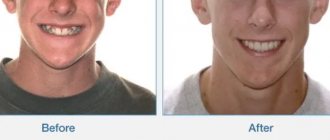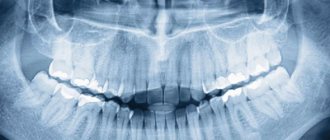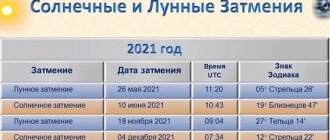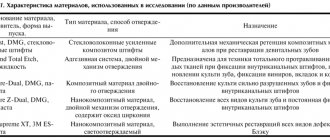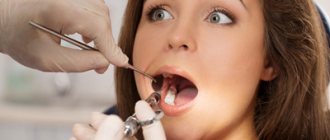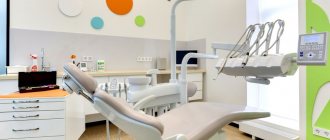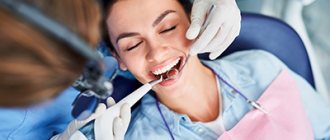Orthodontics is the branch of dentistry that deals with the correction and prevention of crooked teeth, irregular tooth spacing, and abnormal dental occlusion (bad bites), and is often necessary to improve the stability, functionality, health, and appearance of your teeth. Orthodontic devices, such as braces and retainers, straighten teeth and correct their alignment and prevent or alleviate certain sleep disorders.
Disorders that can be corrected with orthodontic devices
How can you tell if you or your child may need orthodontic devices? The need for them may be caused by the following symptoms:
- Malalignment of the jaw (caused by growth problems or bad habits), causing teeth to close incorrectly or not at all, in some cases causing temporomandibular joint disorders;
- Sleep disorders such as snoring or obstructive sleep apnea (holding your breath);
- Complete reconstruction of the oral cavity and/or dental appearance requiring stabilization;
- Too early or too late loss of primary teeth, which may result in irregular teeth spacing, crowding, damage and/or crooked teeth;
- Thumb sucking, tongue pressing, lip retraction and other bad habits that can lead to protruding teeth and unharmonious development of the jaw;
- Difficulty chewing or biting food;
- Breathing through the mouth;
- Teeth that are crowded, growing out of place, protruding or tilted back (including due to traumatic injuries);
- Biting the inside of the cheek;
- Unbalanced or asymmetrical facial features;
- Grinding or clenching of teeth.
Custom mouthguards for bruxism
These are orthodontic structures that are made in a dental laboratory based on impressions of the jaw of a particular patient. They are used in severe cases of the disease, when the symptoms of bruxism are significantly pronounced and serious correction of the dentition is required. The more accurately the design is selected, the more effectively it affects the jaw muscles. Usually, after the patient puts on a dental guard, 10-15 minutes are enough for the muscle spasm to go away and the headache or neck pain to subside. The downside of these structures is that they take quite a long time to produce - up to several weeks, and the patient often needs to start treatment as soon as possible.
Complications that can occur if dental health problems are not attended to
Protruding, crowded or irregularly spaced teeth give a person an unattractive appearance and make it difficult to perform oral hygiene procedures. The latter, in turn, can lead to tooth decay, gum disease and tooth loss, in addition to a number of other health problems. A malocclusion can interfere with chewing food and speaking, cause excessive wear on tooth enamel, and contribute to the development of jaw diseases such as temporomandibular joint disorders. Other possible complications include ear pain, headaches, migraines, neck and shoulder pain, breathing and sleeping difficulties (such as snoring) and ultimately a loss of self-confidence.
Who installs orthodontic devices for patients?
Most general dentists are trained to examine, diagnose and treat some minor orthodontic disorders. However, if your general dentist determines that you need to be treated by a specialist in orthodontics, he or she will refer you to an orthodontist who has two to three years of additional education in addition to his general dental education.
Orthodontists are trained to diagnose, prevent, and treat dental and facial abnormalities and routinely treat children, adolescents, and adults. Many orthodontists are also trained to work with children seven to nine years old, and to use so-called “functional appliances” to correct disharmonies in early facial, skeletal and dental development, in order to avoid short-term braces and, if possible, avoid tooth extraction or surgery. Anomalies in facial development can be corrected at an age when the child’s growing bones are still plastic and at the same time he is not so small that it is impossible to achieve obedience from him.
Types of orthodontic devices and retainers
The following are examples of orthodontic devices and retainers:
Braces and bracket systems
[google]
The most common type of orthodontic device, braces are suitable for children, teens and adults. Made from bands and arches that are attached to the teeth, they correct misaligned teeth by moving them in the desired direction or holding them in place. Braces that directly fix teeth are made of metal, ceramic, plastic, or combinations of these materials. Although metal braces are more noticeable, they are the strongest and most effective for correcting complex malocclusions. Ceramic braces, which look better but are weaker than metal braces, usually take longer to wear. Lingual braces are attached to the back of your teeth to make them less noticeable but require longer wear.
Fixed braces are worn permanently and can only be removed by a dentist; in contrast, removable braces can be removed from the mouth. However, to achieve the best and fastest results, it is not recommended to remove braces from your mouth frequently and/or for long periods of time. Most patients wear braces for one to three years, depending on the severity of the disease. The price of braces ranges from 30,000 to 300,000 rubles.
Removable devices
Resembling a mouth guard, removable devices (sometimes called retainers) are small, custom-made items made of plastic and metal. The upper retainers are placed under the palate, and the lower ones - on the lower teeth, and the lower retainers can be either fixed for a long time or removed from time to time. Retainers are most often used after wearing metal braces to hold teeth in the desired position. In other cases, orthodontic patients may wear removable appliances to cover gaps between teeth or missing teeth, or to displace a single tooth. In these cases, there is no need for braces, since removable devices are sufficient.
Removable devices can also help you with speech difficulties and other medical conditions. Some removable devices, called removable tongue retainers or tongue cages, consist of thin pieces of wire that hang from the roof of your mouth. These devices prevent your tongue from sticking between your teeth when you speak.
In addition, removable devices can help people with temporomandibular joint disorder. This disorder is usually caused by a malocclusion or involuntary grinding of teeth during sleep. Teeth grinding strains the muscles and joints that control the mouth and jaw movement, leading to jaw pain as well as headaches and ear pain. Devices placed at night prevent the patient from closing their mouth while sleeping, which prevents teeth grinding.
During the first months of treatment, most patients (children, adolescents, and adults) must wear retainers at night. Many patients are prescribed to wear retainers during the daytime. Retainers are often worn for several years. During the first few days of wearing the retainers, the patient sometimes feels pressure and irritation, but this discomfort soon subsides.
The cost of the retainer is usually included in the total price of braces. When retainers are prescribed to correct a slight malocclusion without braces, its price can be 5,000-30,000 rubles. This price includes dental visits, ultrasounds, and retainers. If this price does not include the cost of replacing the clamps, then it can be 4,000 - 12,000 rubles for each.
Transparent corrective aligners or aligners
An attractive alternative to traditional braces, clear, or “invisible,” corrective devices are a range of clear, custom-made aligners. Unlike metal braces, these braces are minimally invasive and do not trap food particles between teeth or promote tartar buildup. They can be removed for eating and brushing teeth, as well as attending important events. Corrective devices are often recommended for adults with minor dental spacing problems. They are not prescribed to children and adolescents with baby teeth.
Transparent correction devices are manufactured in the laboratory according to individual orders using computer technology. They are sold in sets, the number of which depends on the patient’s condition. Each set should be worn for a certain time, changing it to the next one as often as possible. Although the duration of wearing these devices varies greatly depending on the type and severity of the dental malformation, as well as the brand of the device (Invisalign or ClearCorrect), in general, the wearing period usually ranges from 9 to 24 months. The cost of clear corrective devices exceeds the price of traditional braces.
Space clamps
These are small devices that are made of plastic or metal. They are difficult to detect and the patient easily gets used to them. They are made according to individual orders. This is a simple and cost-effective way to keep teeth in place. For example, in the case of premature loss of a baby tooth, space maintainers straighten the remaining teeth on the sides of the lost tooth to maintain their natural position in the jaw. This keeps the teeth from shifting into the empty space, which can cause crowding and/or crooked teeth once the permanent teeth emerge.
Space maintainers also help maintain the proper alignment of adult teeth, prevent complications, and eliminate the need for additional and more expensive orthodontic treatment.
Mouthguards
They are often worn by athletes. Mouthguards are protective devices that protect the lips, soft tissues of the mouth and/or artificial objects such as braces from impacts and other physical contact. In some cases, mouthguards stabilize the temporomandibular joint, also helping to prevent damage to the temporomandibular joint. The cost of mouth guards can range from several thousand rubles for serial sets sold in pharmacies, to 15,000 rubles for mouth guards that are manufactured according to the dentist’s prescription on a special order.
Night guards
They are also often called occlusal planes, bite guards or "night watchmen". Night guards are removable devices worn to protect the teeth and/or modify the bite. Custom-made to fit your upper or lower teeth, night guards are also used to treat conditions caused by jaw complications such as headaches, neck pain, and to stabilize your bite before dental procedures.
Occlusal splints, or “night watchmen,” are designed to relieve pain caused by involuntary grinding or clenching of teeth. Wearing these devices can help slow down the wear and tear of your teeth. Night guards should only be worn at night; other types of such devices are usually worn 24 hours a day.
Occlusal pins are made of soft or semi-rigid plastic (in the case of night watchmen), or hard or semi-hard polyester plastic, acrylic or nylon. Soft or stretchy types are less durable, harder to fit, and harder to keep clean. Some patients will even become more tempted to grind and clench their teeth, i.e. the symptoms that these devices are designed to eliminate will, on the contrary, intensify. No types of occlusal splints should be used for sports or recreational use because they are not strong enough to provide the level of protection that sports mouth guards provide.
Between inspection, adjustment, follow-up visits, and the cost of the device itself, occlusal pins can cost thousands of dollars.
Some types of occlusal pins are sold in stores. Although it is cheaper, we do not recommend buying ready-made occlusal pins: since they are not made to fit your teeth, they will not fit well and can cause permanent and unwanted changes in your bite.
Plates for front teeth
A mouth guard-like device that helps relax the jaw muscles, front teeth guards are best suited for those who suffer from severe and/or chronic involuntary teeth grinding and clenching. Plates for front teeth can be worn day and/or night, on the upper or lower teeth, depending on the type and extent of the disease. They are designed to relieve muscle fatigue and reduce tension headaches, combat migraines and disorders of the mandibular-facial joint. They are usually made of plastic and cost on average about 15,000 rubles.
Palatal expander
Best suited for the development of children 8-10 years old, the palatal expander is used in cases where the palate is not wide enough - and, in fact, expands it. Palatal expanders are not recommended for adults except as part of oral surgery procedures. Palatal expanders are relatively economical.
Means to combat sleep disorders
These custom-made devices are designed to help patients sleep soundly and longer, reducing the effects of apnea (snoring). They treat obstructive sleep apnea, a condition in which the patient stops breathing while sleeping, preventing the airway from becoming blocked. Sleep aids, usually made of plastic or acrylic, are held in the mouth during sleep, similar to orthodontic appliances. They prevent the soft tissues of the mouth from collapsing, preventing normal breathing. These devices may also be used to force the mandible, tongue, and soft tissues of the palate into a specific position that allows the tongue and mandible to keep the airway open, or to artificially tone the muscles to prevent them from collapsing and blocking the airway. Means to combat sleep disorders cost from 15,000 to 45,000 rubles.
Occlusal aligner
Often the best method for correcting deviations (for example, the tips of teeth that project too high or not high enough) that prevent the teeth from closing properly is an occlusal aligner, which reshapes the surfaces of individual teeth. When a dental malocclusion (bad bite) is present, the teeth often require stabilization as a malocclusion can lead to other problems such as neck, head and/or shoulder pain, excessive wear and breakage of dentures. These problems usually occur because the teeth, dentures, and/or appliances placed on the upper jaw do not fit well with the lower jaw. An occlusal aligner mechanically changes the shape of teeth and denture material to ensure proper closure of the upper and lower teeth.
Installation of a simple occlusal aligner usually requires only one visit. If your bite changes slightly over time, further adjustments may be required. More complex aligners usually require multiple visits, and teeth may noticeably change position as treatment progresses. The occlusal aligner is no longer worn when the bite has stabilized and symptoms have resolved. The cost of the device ranges from 15,000 to 45,000 rubles (including measurements, diagnosis, the device itself and subsequent visits to adjust them and straighten the teeth).
Face-Mask
The facial mask ( Dilyara ) belongs to the category of auxiliary extraoral orthodontic appliances that are used to treat mesial occlusion in childhood and early mixed dentition.
There are several most common types of face masks used to correct malocclusion: Dilyar's mask, Tubinger's mask, Petit's mask. All face masks differ only in design features, they relate to the size, type and points of attachment of the mask on the face, but have the same purpose - to correct the bite. Their action is based on the formation of extraoral horizontal and mesial traction, which affects the growth of the upper jaw, thereby “stretching” the jaw.
A face mask is prescribed in the following cases:
1. The profile of the face should be concave (protruding chin, receding upper lip) 2. Early age, since the most effective use of the mask is in the primary and early mixed dentition;
The face mask is a metal frame containing two supports that are placed on the patient's chin and forehead and are combined with elastic traction. The face mask is used in combination with a plate and hooks for traction, or a brace system.
Benefits of face masks
1. Easily removable outer part of the mask. 2. Easy to remove the thread after use. 3. Easy care of the device (the lightness and elegance of the entire structure, which allows you to feel the mask on your face no worse than glasses on your nose, the support pads do not cause irritation and allergic reactions). 4. High efficiency of the entire structure.
Disadvantages of the device
The only significant drawback of extraoral appliances is the impossibility of their round-the-clock use. The effectiveness of treatment depends on compliance with wearing a mask. On average, treatment using a face mask takes 2-4 months when wearing it 12-16 hours a day.
Patients for whom orthodontic devices are indicated
Orthodontic procedures, if necessary at all, usually begin between ages 7 and 14. The ideal age for orthodontic appliances is between 10 and 14 years of age, when the head and mouth are still growing and teeth are easier to straighten.
The most common forms of treatment for poor bites in children and adolescents are braces and retainers, and space maintainers. Treatment with permanent braces usually lasts about 24 months for children and teenagers, but it takes about 28 months for adults. Some dentists recommend wearing retainers for many years because teeth move out of position over time. Space maintainers prevent teeth from being forced into place by missing teeth removed or lost due to traumatic injury. Although early detection and correction in childhood and adolescence leads to better results, adults can also correct syndromes such as crooked and crowded teeth, malocclusion of lower incisors with upper or lower incisors, malalignment of the lower jaw, or jaw disorders. -facial joint.
Because bones in adults are harder and do not grow, treatment for adults takes longer than for children and may cause more discomfort, cost more, and require surgery. Additionally, while orthodontic treatment generally poses no risk for adults with healthy teeth and gums, it is riskier for adults with sore gums. To avoid possible complications such as further gum damage or tooth loss, adults with gum disease should undergo a periodontal evaluation before treatment begins.
Indications for osteosynthesis
Osteosynthesis may be prescribed in the following cases:
- if there are not enough stable molars at the fracture sites;
- upon impact, the fragments moved significantly;
- broken jaw bone behind teeth. With such an injury, individual parts of the bone tissue are displaced;
- the injury occurred as a result of the development of inflammatory diseases that thin the bone tissue;
- in case of a fracture of the lower jaw, if too small or massive fragments have formed;
- if the branches and body of the jaw are incorrectly positioned relative to each other;
- it is necessary to perform reconstructive surgery or osteoplasty.
Duration of treatment with orthodontic devices
The time required for orthodontic device treatment depends on the treatment plan and specific conditions. The more complex the problem with the bite or the space between the teeth and the older the patient, the longer the treatment. Most patients have to wear a full set of braces for one to three years. After having braces removed, most patients typically wear some type of retainer for about a year to keep the teeth in their new position, but non-fasting patients must always wear night retainers.
Some types of orthodontic devices, such as mouth guards and night retainers used during restorative procedures, or occlusal alignment devices, are intended to be worn for limited periods of time and under special conditions - for example, during increased physical activity and participation in contact sports, or, respectively, after undergoing oral surgery or occlusal realignment procedures. The length of time you wear nighttime orthodontic devices depends on the conditions and the degree of sleep disturbance.
Cost of orthodontic devices
The price depends on the type and continuation of treatment, the specialist who conducts it, materials, the cost of laboratory work, and the location of the dental clinic.
Tags: braces, bite correction
Previous post
Braces Installation Procedure: Maintenance, Removal and Restoration
Next entry
Favorable prices for orthodontic devices at DENT-HUNTER
Has your specialist prescribed you to wear a mouth guard? Order the necessary products on the DENT-HUNTER website. Our company has been selling dental equipment and orthodontic devices for many years. The catalog presents a wide range of products at reasonable prices.
Advantages of DENT-HUNTER:
- varied assortment;
- only original products;
- Fast shipping;
- reasonable prices.
Our store has become the official partner of most brands for the production of mouthguards and trainers. Do you want to know the conditions in more detail and see the best aspects of ordering online? Call us!

